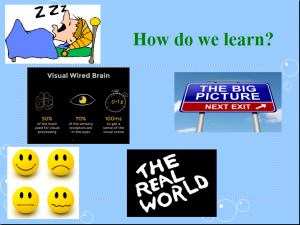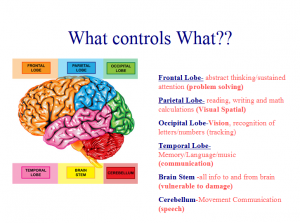Reading is comprised of many processes and components in the brain that must be mastered to be proficient for a MASTER reader. Rosenblatt (2004), states, “It is a process of constructing meaning from a written text as a result of thinking with the guidance of the existing text.” Reading components include phonemic awareness, phonics, oral fluency, vocabulary and comprehension. Reading 3D helps us to pinpoint these skills to intervene and “fix” instruction for our students. As a student gets older, it is harder for us to determine where our students need help because they are reading for longer periods of time silently and independently.
Oral Reading Fluency (ORF) is one integral part of the reading process. When a person is a fluent reader, they decode and recognize words quickly and efficiently which allows the brain to focus on the meaning rather than deciphering words. Think of the acronym PA.R.E., which stands for punctuation, accuracy, rate and expression. The rate is the speed in which the child decodes words and the accuracy measures the correctness. Punctuation and expression (prosody) make up the final component, which is the child’s ability to understand the syntax (the arrangement of words and phrases to create well-formed sentences in a language), phrasing and intonation of a text.
In my experience, there is one missing skill to ensure proficiency in a reader–Silent Fluency. Students do silent reading even in Kindergarten. Beginning in second grade, students begin to transition to reading silently the majority of the time and are expected to be proficient at it by third grade for standardized testing. (FOR FOUR HOURS) However, how much ACTUAL instruction do we do to ensure students can transition from fluent oral readers to fluent silent readers?
When reading silently, students learn to accommodate for their weaknesses and apply strategies in different ways than when reading aloud. When you read silently, you no longer have to pronounce everything correctly; you can skip unknown words, skim descriptions and simply make individual changes in your reading patterns. In a study by Dr. Kasim Yildirim, the findings were that silent reading fluency was a stronger predictor of comprehension than oral fluency especially in older students. This makes sense because when our students are not proficient and reading silently, they often become “Fake Readers” who skim text rather than read. Others are able to get the “gist” out of the text but are missing the subtle inferences, clues and hints of mood changes, tone and character personalities that the author hides in figurative descriptions.
As an upper grade teacher, I was all about the comprehension and spent the majority of my time teaching students how to dive deep into text. However, I also knew that many of my students were not able to apply skills from class into independent reading. What I did not fully understand was the reason for their struggle. Reading in the upper grades takes a MAJOR TURN because the students are in control of their reading and the teachers know very little about what strategies they are using or how they are learning to compensate for missing skills. Teachers no longer see patterns of missed words or hear mispronunciations. They are unaware of the breakdown in decoding or comprehension. Students are not applying the strategies and monitoring comprehension independently due to a lack of accountability or practice.
When I taught AIG, I realized how effective my students were at reading the “gist” of a selection but not reading deeply enough. I experimented with my instruction, by giving students a text that I knew they would not be familiar with the vocabulary. One I enjoyed using was “The Jabberwocky” by Lewis Carroll. Here is an excerpt:
‘Twas brillig, and the slithy toves
Did gyre and gimble in the wabe;
All mimsy were the borogoves,
And the mome raths outgrabe.
“Beware the Jabberwock, my son!
The jaws that bite, the claws that catch!
Beware the Jubjub bird, and shun
The frumious Bandersnatch!”
I would ask them to read this silently and share with their neighbors their findings. As I watched, I noticed that some students were looking around to see what others were doing; some were drawing or writing on their papers (strategies?), and some were intently reading but most likely FAKE READING. I pointed the word OUTGRABE and asked someone to read the word. They struggled to decode it and I asked—did anyone circle the word to show they did not know it? Did anyone chunk this word and try to sound it out? We discussed strategies and how to properly decode an unknown word. What I found was students were not remembering rules of phonics such as the magic e or sounds of blends or a diphthong. Some were able to give me the “gist” of the excerpt because they were able to apply context clues to their thinking but for the most part—they skipped most of it. If our students are reading in this manner—they will not pick up on the subtleties of an author’s craft or deeper meaning of figurative language that may be nestled within the words.
I encourage you to begin investigating your students’ silent fluency. The following steps can be completed in whole group to get a more in depth picture you will need to do one on one.
- Time students for a minute, as they read silently, and have them box the last word when you call time.
- Repeat this process three times. Have students record these numbers on a chart to get an average WPM.
- After the third reading, have student write a short summary on the back without looking at the text.
- Finally, have students finish reading the text silently and answer basic comprehension questions without looking back.
* Some people like to have student underline the word as they read to ensure that they actually read it but if you let students know this is to help them—you will find for the most part—it will be accurate.
The timing of students will help you calculate the rate your students are reading and the automaticity of their decoding. You will be unable to determine how accurate it is without questioning. You will find some students who have a high WPM but have no understanding of the text and some students who are reading slowly that have a deeper understanding. The summary and questions will help you to figure out if your students have basic understanding of what they read. Conferencing with a student is a gold mine of information.
- Ask them about specific words—Can they decode?
- Ask them questions that require inferences or interpreting figurative language—Did they read deeply enough?
- Are they making sense of what they read?
- Are they making connections?
- Do they understand text structure and use it to navigate as they read?
- Do they know how to chunk a word into syllables and apply understanding of phonetic knowledge?
Explicitly teach students how to think when they read. Have them read short excerpts and discuss—have them reread and dig for information. Have them reflect as they read. Where did you stop understanding? Encourage your students to annotate their thinking but most importantly question them about what they wrote. Students will write anything if they think it is what you want. You must show them that the annotation is for THEM to understand.
TREASURE is a simple way to encourage students to begin thinking about their reading. Nevertheless, do not forget that to get to the comprehension—we must ensure our students are really reading silently and able to decode fluently the text that we are giving them. As upper grade teachers, we often think that only comprehension matters but if a child does not have silent fluency—they are not able to fully read and apply the strategies you have taught to be able to comprehend the text in the depth and manner in which standardized tests will require.
Note:
PLEASE ASK ME FOR MORE IDEAS AND STRATEGIES FOR THIS! THIS IS A K-5 ISSUE NOT JUST AN UPPER GRADE PROBLEM. WE HAVE TO TEACH THINKING WHEN READING EVEN IN K-1–ORAL FLUENCY DOES NOT DO THIS!
Resources:
Optimal Reading Rates
http://www.readinghorizons.com/blog/post/2010/07/19/optimal-silent-and-oral-reading-rates.aspx
 S
S